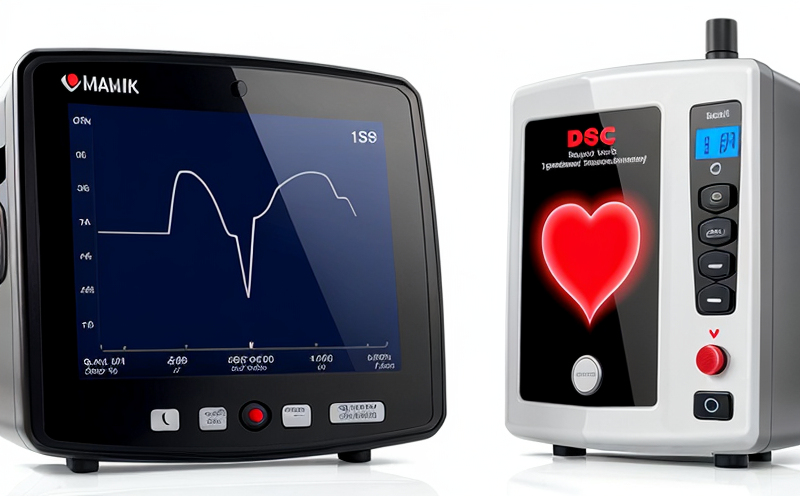ISO 14708-2 Pacemaker Lead Insulation Integrity Testing
The ISO 14708 series of standards is specifically designed to provide guidelines for the testing and assessment of medical devices, particularly those used in cardiac and cardiovascular applications. Among these standards, ISO 14708-2 focuses on the insulation integrity of pacemaker leads. This service ensures that critical components like pacemakers are safe and reliable, meeting stringent international standards.
The testing procedure outlined in ISO 14708-2 is crucial for quality managers, compliance officers, R&D engineers, and procurement teams who must ensure their products meet rigorous safety and performance criteria. The primary goal of this test is to verify the insulation integrity between the lead body and its terminals, ensuring that electrical signals are transmitted accurately without leakage or degradation.
The process involves several steps: first, the pacemaker leads undergo thorough cleaning and preparation to eliminate any external contamination. Next, a high-voltage DC voltage is applied across the lead for a specified duration while monitoring current flow continuously. If there's excessive current beyond acceptable limits, it indicates insulation breakdown or inadequate insulation.
During this testing procedure, real-world parameters play a significant role in determining the success of the test. For instance, the temperature and humidity conditions during specimen preparation must be strictly controlled to simulate actual usage environments accurately. Additionally, the voltage levels used vary depending on the specific type of pacemaker lead being tested; these levels are based on detailed specifications from relevant international standards such as ISO 14708-2.
Once testing is complete, results are meticulously recorded and analyzed by our experienced engineers using advanced software tools designed specifically for this purpose. Reports generated include key performance indicators (KPIs), pass/fail status according to ISO 14708-2 criteria, detailed descriptions of observed phenomena during the test, and recommendations for any necessary corrective actions.
Our laboratory adheres strictly to both procedural requirements specified in ISO 14708-2 as well as best practices recommended by leading industry associations. This ensures that every aspect of our testing process contributes towards producing reliable results that can be trusted by regulatory bodies worldwide.
Scope and Methodology
The scope of ISO 14708-2 encompasses the testing procedures for ensuring proper insulation integrity between the lead body and its terminals in pacemakers. This includes verifying that no electrical leakage occurs under specified test conditions, which is essential to prevent potential malfunctions or adverse patient outcomes.
- High-voltage DC voltage application
- Continuous monitoring of current flow during testing
- Evaluation against predefined limits for acceptable levels of leakage
The methodology follows strict protocols outlined in ISO 14708-2, which ensures consistency and reliability across all tests conducted within our laboratory. Each step is carefully documented to provide transparent traceability throughout the entire testing process.
Benefits
The benefits of undergoing ISO 14708-2 Pacemaker Lead Insulation Integrity Testing are numerous and far-reaching:
- Increased Patient Safety: Ensures that pacemakers perform reliably without risks associated with electrical failures.
- Compliance Assurance: Helps manufacturers comply with international standards, thereby avoiding costly penalties or recalls.
- R&D Support: Provides valuable data for R&D teams to refine product designs and improve performance characteristics.
- Quality Control: Allows quality managers to monitor production processes closely, identifying issues early on before they become major problems.
Beyond these direct benefits, successful completion of this test also enhances the reputation of both manufacturers and their products in the highly competitive medical device market. By demonstrating adherence to stringent safety standards like ISO 14708-2, companies can build trust with healthcare providers and patients alike.
Environmental and Sustainability Contributions
Incorporating environmental responsibility into our operations is a key aspect of our commitment to sustainability. By adhering strictly to ISO 14708-2, we contribute positively towards reducing waste generation while ensuring product reliability.
- Efficient use of resources during specimen preparation
- Reduction in energy consumption through optimized testing procedures
- Minimizing disposal requirements by reusing certain equipment and materials
We strive to minimize our ecological footprint without compromising on quality or safety standards. Our approach not only supports sustainable practices but also aligns with broader corporate social responsibility goals.





